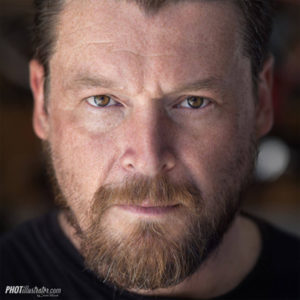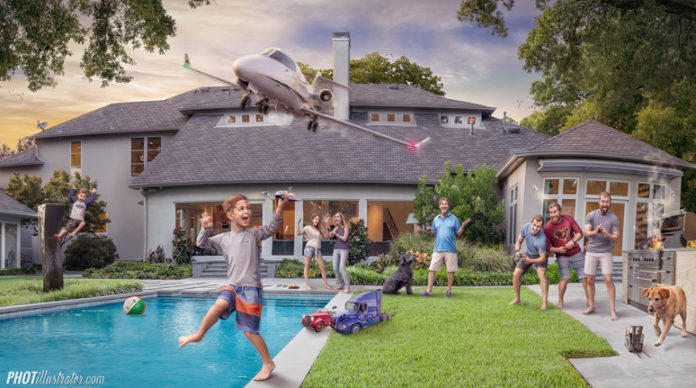by Jason Ulsrud
Texas School Instructor
Have you ever wanted to create composites that are uniquely different? Three years ago, my composites were average at best and nobody gave two squirts about my work. So, I know exactly how it feels to want to create something different. Thankfully, I discovered what it takes to bridge the gap between being an average photographer to making awesome pictures that are different. With a few changes, you can create uniquely different pictures as well. The only thing separating you from the photographers who inspire you is your ability to master your craft, share your world, and open the gap. Just in case you’re wondering what “opening the gap” means, keep reading and I will explain.
Starting out, I quickly noticed there was a clear difference between those photographers we all looked up to and those photographers doing the looking up… the quality of their work. So, one of the easiest ways to be uniquely different is by mastering your craft. For me, that meant knowing how to use my camera in manual mode, knowing the three best lighting scenarios for composite photography, understanding the relationship between light and shadows, and sharpening my Photoshop and compositing skills. With all the workshops and online courses, mastering your photography and compositing craft is easier than ever.
The very first composite I ever created looked like crap. Even so, I knew instantly that I was going to become a composite photographer. To that end, I spent the next few months searching for a uniquely different “style. ” My style soon became creating images with cool and sparkly effects, which I discovered by creating images with cool sparkly effects. Thankfully for me, that didn’t last long.
Several months later, looking back at that first crappy composite, I realized something that would change the course of my compositing journey. My uniquely different “style” had nothing to do with sparkly effects or a compositing technique but rather from how I saw the world. When I was creating that first composite of my family, I wasn’t thinking about having a unique “style” or having an “illustrative” look, or being “different.” The only thing I cared about at that time was whether I could recreate the image from my mind. In other words, I was creating the picture I wanted to see of my family. How you interpret the world around you matters. Sharing how you see the world is what makes you so different and special.
I didn’t know this in the beginning but, after spending a lot of time and research on storytelling, I’ve learned the art of opening a story gap. In fact, in the beginning of this article, I opened the gap by asking if you were wondering what “opening a gap” meant. It simply means posing a question. Using my composited portrait, “The Race,” opening the gap means “Why is the jet flying through the scene? What’s the boy doing with the space shuttle? Why does the guy on the right have such a funny look on is face? What’s the yellow dog trying to do?” And, most importantly, “Who is going to win The Race?”
These are all great questions you might be asking when you look at this composite and all are opening the gap to draw you into the scene. The scene is well crafted to portray this family’s experience of the world. However, once you’ve opened the gap by posing the questions, it is important to close the gap by leading your audience to answer those questions. .
For example, it is reasonable to assume that the three boys on the right are racing the remote control car, truck, and forklift because they’re all looking at the cars they’re racing. This leaves dad in the middle, controlling the plane; the boy with the space shuttle, trying to be part of the race; and the dog thinking the forklift is his own personal toy. Give your audience a way to answer the questions, because unclosed gaps cause anxiety and confusion.
Being consistent is an added bonus. I’ve spent my entire life jumping from photography to chiropractic and back to photography and from one style to another style, never spending much time on anything. I bought into the myth that creativity meant always trying different things. If you are ADD and always chasing the next shiny red ball, you know what I’m talking about. However, through experience, I’ve learned that being consistently awesome is different because so few people give their creativity time to catch on with everyone else. Being consistent also gives you the chance to master your craft, to embrace how you see and share the world, and to develop fun and interesting ways to open up gaps that draw the audience into your composites.
Imagine how you’d feel if your favorite composite photographer all of a sudden stopped doing composites and started doing regular photography. In fact, this actually happened with one of my favorite composite photographers. If your goal is to make awesome pictures that are different, you must do things differently than the average photographer who is just OK at their craft, who only tries to create images like other photographers who inspire them, who fail to open any kind of gap with their audience, and who consistently switch from one type of photography to the other… never giving people a chance to embrace their creativity.
So, let’s open a gap here. What one thing out of this list can you start doing now to be different? Don’t leave me anxious and confused. Close the gap and answer that question by emailing me at Jason@photillustrator.com. I would love to hear from you!
J ason Ulsrud helps photographers bring their visions to life through the magic of Composite Photography and wants to help photographers discover their own unique style, bring it to life in an awesome picture, and make money doing what they love. He will be one of the program speakers at the iHeart Photo Conference and will also be an instructor at the 2019 Texas School of Professional Photography. You can connect with Jason at www.photiversity.com or email him at Jason@photillustrator.com
ason Ulsrud helps photographers bring their visions to life through the magic of Composite Photography and wants to help photographers discover their own unique style, bring it to life in an awesome picture, and make money doing what they love. He will be one of the program speakers at the iHeart Photo Conference and will also be an instructor at the 2019 Texas School of Professional Photography. You can connect with Jason at www.photiversity.com or email him at Jason@photillustrator.com











